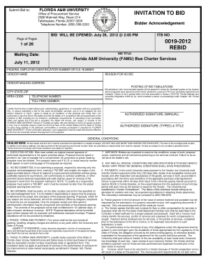
Contact the accountants in Downers Grove from Accounting & Tax Advisers CPAs for more information on your consulting, accounting, and tax services. Our professionals are ready to help with all your small business financial planning. Wise also offers easy financial management services, allowing you to pay invoices, employees and manage subscriptions fast, in one click. See balances in different currencies, pay suppliers quickly, and take greater control over cash flow – all in one place.

You must obtain professional or specialist advice before taking, or refraining from, any action on the basis of the content in this publication. The information in this publication does not constitute legal, tax or other professional advice from Wise Payments Limited or its affiliates. We make no representations, warranties or guarantees, whether express or implied, that the content in the publication is accurate, complete or up to date. Therefore, it is important to clearly and accurately present this information to internal and external members. Historically financial modeling has been hard, complicated, and inaccurate. The Finmark Blog is here to educate founders on key financial metrics, startup best practices, and everything else to give you the confidence to drive your business forward.
You can send international business transfers with Wise Business for up to [19x less compared to PayPal]. The fees are simple, transparent, and upfront, so you’ll know what you’ll pay for your transfer, every time – no guesswork needed. You also need to list any investments, such as new purchases and the sale of certain assets. You may need to include information such as a company purchasing new equipment or other assets. This method is generally easier to prepare, and most companies use this method. Do you want to talk more about choosing the right financial solutions for your business?
Example of the Indirect Method
A cash flow statement is one of the most important tools you have when managing your firm’s finances. It offers investors and other stakeholders a clear picture of all the transactions taking place and the overall health of the business. As you can see in the table, the value of accounts receivable is put in parentheses, indicating that it’s negative. This is because the firm gave a credit of $10,000 to its customers, so it has $10,000 less to use. Likewise, there is an increase in inventory by $10,000 as the business might have invested in stock.

But because it’s based on adjustments, one of its disadvantages is that it doesn’t offer the same visibility into cash transactions or break down their sources. It may not always get the most love, but your cash flow statement is a vital part of your reporting story. That’s why, in this post, we’re going to talk all about choosing the best cash flow method for your business.
Indirect Method
To perform this calculation, begin with net income, add back non-cash expenses, then adjust for gains and losses on the sale of assets. To calculate cash flow from operating activities using the indirect method, take the company’s net income and add or subtract non-cash items. Business owners use cash flow statements, investors, creditors, and stakeholders to evaluate a company’s performance. Non-cash items also count while calculating net income in an income statement or assets and liabilities in a balance sheet. Cash flow for non-cash items is calculated by adjusting the company’s net income based on differences in revenue, expenses, and credit over a time period. The differences used to make the adjustments are taken from two or more balance sheets and income statements.
Thus, many companies will choose to only utilize the indirect method to save their team the time of having to prepare the cash flow statement using both methods. The indirect method lacks such deep insights since the net cash flow metric is indirectly calculated from the other financial statements. So even if the company chose to use a direct method cash flow statement for internal reporting purposes, they’d still need to prepare an indirect method statement to stay compliant–doubling their team’s workload. Plus, if a business is a publicly traded company, they will be required to report an indirect method cash flow statement under Generally Accepted Accounting Principles (GAAP) requirements. Since the direct method simply utilizes all cash-based transactions to prepare the operating cash flow section, the calculations are simple, straightforward, and easy to follow. Using each of these values, you will prepare the operating section of the cash flow statement, resulting in a net cash flow from operating activities.
For example, if a company pays off part of its debt, you should include this amount. A negative cash flow statement can be a strong indicator that your company’s not in a good position for a potential economic downturn or market shift. Since you only need to use information from the financial statements that were already prepared, this is a much more practical and efficient use of your team’s time. Tracing back what’s causing cash inflows or outflows is less transparent with the indirect method given how it’s prepared. The direct method is often used in tandem with the cash method of accounting, where money is only accounted for when it changes hands. Under the accrual method of accounting, revenue is recognized when earned, not necessarily when cash is received.
How to Calculate Cash Flow Using the Direct Method
The indirect method, on the other hand, starts off with a statement of net quarterly income and adjusts for expenses and revenues by accounting for credit transactions and items that aren’t direct cash. The items on an indirect cash flow statement can include depreciation expenses, for example, even though such expenses don’t involve actual cash changing hands. In the indirect method, you adjust net income to convert it from an accrual to a cash basis. This requires you to add back non-cash expenses such as depreciation, amortization, loss provision for accounts receivable and any losses on the sale of a fixed asset. You also adjust net income for changes between the starting and ending account balances in current assets – excluding cash – and current liabilities for the period. These accounts include accounts receivable, inventory, supplies, prepaid assets, payable liabilities and unearned revenues.
Modivcare Reports Second Quarter 2023 Financial Results and … – Silicon UK
Modivcare Reports Second Quarter 2023 Financial Results and ….
Posted: Thu, 03 Aug 2023 19:05:00 GMT [source]
These changes to the asset or liability accounts present themselves as non-cash transactions such as depreciation or amortization. The indirect method is one of two accounting treatments used to generate a cash flow statement. The indirect method uses increases and decreases in balance sheet line items to modify the operating section of the cash flow statement from the accrual method to the cash method of accounting. It’s important to remember that the indirect method is based on information from your income statement, which could have certain limitations. This means you may need to take additional actions, such as accounting for earnings before taxes and interest, and making adjustments for non-operating expenses such as accounts payable and depreciation. However, the direct cash flow method provides a better spend analysis that finance teams can use to minimize spend management mistakes.
• Cash Flow from Investing Activities
The balance sheet shows the financial position of the business for a given financial period. The income statement reports the revenues and expenses for the given financial period. The cash flow statement indirect method is one way to present a company’s total cash flow. In this method, you begin with the net income and adjust it to calculate the company’s operating cash flow. You can gather this information from the company’s balance sheet and income statement. This report must plainly show the reconciliation between net income and cash flow from operating activities, listing the net income and adjusting it for non-cash transactions and balance sheet account changes.
Among the main trifecta of financial reports–the balance sheet, income statement and cash flow statement–it’s often the statement of cash flow that gets the least attention and time. But as a view into your company’s liquidity, it provides an important piece of the puzzle. Unlike the direct method, the indirect method uses net income as a baseline. Using the indirect method, after you ascertain your net income for a specific period, you add or subtract changes in the asset and liability accounts to calculate what is known as the implied cash flow.
It can include money received from customers and interest payments, as well as money paid out for employee wages, supplies, and taxes. The value of both direct and indirect cash flow is that they allow you to gauge your company’s financial health and make decisions accordingly. The downside to these types of cash flow is that they can be misleading if not managed properly or calculated correctly. If you want to get started with your direct or indirect cash flow statements, grab our free 3-statement model Excel or Google Sheets template. The cash flow statement’s direct method takes the actual cash inflows and outflows to determine the changes in cash over the period.

Because of this, you need to adjust the company’s net income to correctly calculate the operating cash flow. The corporation can use either a direct method or an indirect cash flow technique for reporting purposes. It depends entirely on the situation and the compliance criteria of the company.
Accrual method accounting recognizes revenue when earned, not when cash is received. If you’re reporting month-on-month, a $30,000 sale closing at the end of the month but not how to make single sign getting paid out until the following month can complicate your reporting. After this, you need to add or subtract any items related to the company’s financing operations.
It’s typically much easier for organizations with fewer types of cash in-sources and outsources to utilize the direct method of cash flow statement reporting. In addition, you’ll gain more insight into spending analytics that are useful for evaluating how your organization collects and spends its money. When using this method, you add or subtract changes in assets and liabilities, then add the non-cash expense. We start with the net income figure that is perceived as the “bottom line” of the income statement. This expense reduces net income but does not affect cash, as we don’t make any payments related to it. The direct method of the cashflow and indirect method of cashflow are variants of the cashflow statements.
- These are the activities that go into obtaining funds from outside sources.
- Your indirect cash flow reflects this uncertainty in timing by showing as a long-term liability on your balance sheet.
- After you complete this step, you will list the net change in cash based on these changes in operating, financing, and investing cash flow.
- Either is acceptable according to the generally accepted accounting principles and International Financial Reporting Standards (GAAP & IFRS) guidelines.
Auditors and financial analysts can quickly trace the line items of an indirect cash flow statement using the other financial reports for the period. In addition, there is no need to reconcile cash generated from operations. The below represents an example of a cash flow statement using the direct cash flow method.
Take a look at Vena’s financial reporting solutions here, or reach out to discuss what’s right for you. Mastering cash flow management is something every business will benefit from. Another advantage of the direct method is the specificity and insights it provides compared to the indirect method. Under the U.S. reporting rules, a corporation has the option of using either the direct or the indirect method. However, surveys indicate that nearly all large U.S. corporations use the indirect method.
Under the direct method, the cash flow from operating activities is presented as actual cash inflows and outflows on a cash basis, without starting from net income on an accrued basis. The investing and financing sections of the statement of cash flows are prepared in the same way for both the indirect and direct methods. Based on the type of transaction, cash flow can be calculated using either the direct method or the indirect method. In the indirect method, accrual-based transactions are converted to the cash format before calculating cash flow. Even though the indirect method is time-consuming and complex, most companies prefer this over direct method for its accuracy. Many businesses record transactions in the accrual format and use them to generate income statements and balance sheets, which are used as inputs for generating cash flow statements.

